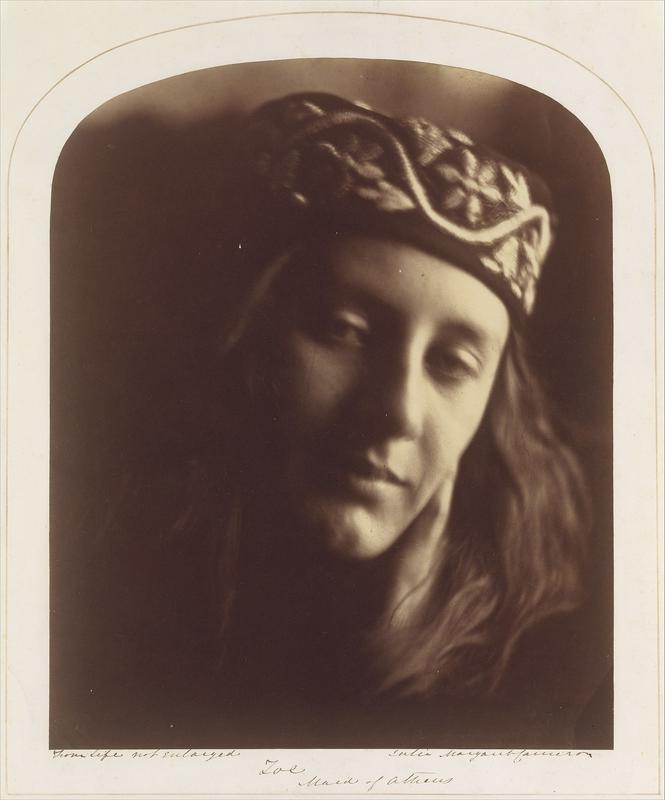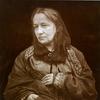More about Zoe, Maid of Athens

Contributor
As Julia Margaret Cameron often did in her work, Zoë, Maid of Athens is actually a photograph inspired by a famous poem.
Cameron had a habit of drawing inspiration from poems and poets. For starters, she read a lot of poetry and seemed to find a lot of joy in bringing her favorite poems to life in different ways. And on top of that, she was friends with some of the most famous poets (and artists) of all time. It wasn’t uncommon for her to hang out with Lord Tennyson, Thomas Carlyle, Sir John Herschel, Henry Taylor, and G.F. Watts.
The poem referenced in this case is Lord Byron’s Maid of Athens, Ere We Part, a poem partially about love and longing. Byron actually went to Athens and fell in love with a girl named Theresa, who he referred to in-person as his “maid of Athens.” But on the other hand, the poem is really about life in Greece in a time of rebellion. Byron translates “Zoë” directly to “life,” and she stands for the inspiration of the Greek people to rebel against the Ottoman Turks.
The girl depicted here is the adopted daughter of Cameron's sister, another classic move on Cameron’s part when it comes to her work. Over the years, she subjected friends, family, and acquaintances to countless photo shoots (my worst nightmare!). She shot a parlor maid as the Madonna, her husband as Merlin (in this photo), her husband again as King Lear, a neighbor’s child as the infant Christ, and the same child with swan’s wings attached as both Cupid and an angel from Raphael’s Sistine Madonna. Cameron’s habit of dressing up of people for photos has often drawn comparisons between her and Cindy Sherman who uses theatrics in her photography as well.
While Cameron seems to loosely reference love and longing (the girl in the photo seems to be gazing off in a longing sort of way), the bulk of the focus is on Zoë as a hero. This is another thing Cameron was constantly doing in her photographic references to poetry—bringing powerful women heroes to life and focusing on them as the center of a piece.
In reference to this photo, the famous painter G.F. Watts, who was Cameron's friend and mentor, wrote, “Please do not send me valuable mounted copies…send me any…defective unmounted impressions, I shall be able to judge just as well and shall be just as much charmed with success and shall not feel that I am taking money from you.” G.F. Watts was later found to own more than seventy of Cameron’s artworks.
Sources
- Anonymous. "Zoe, Maid of Athens,1866." Metmuseum.org. Accessed July 15, 2019. https://www.metmuseum.org/art/collection/search/282043.
- Britannica, The Editors of Encyclopaedia. "War of Greek Independence." Encyclopædia Britannica. February 08, 2018. Accessed July 16, 2019. https://www.britannica.com/event/War-of-Greek-Independence.
- “Julia Margaret Cameron (1815–1879)” Metmuseum.org. Accessed July 12, 2019. https://www.metmuseum.org/toah/hd/camr/hd_camr.htm.
- Lane, Anthony, and Anthony Lane. "Names And Faces." The New Yorker. July 09, 2019. Accessed July 12, 2019. https://www.newyorker.com/magazine/2013/09/02/names-and-faces?reload=tr….
- Rosen, Jeff. Julia Margaret Cameron's 'fancy Subjects': Photographic Allegories. Manchester University Press; 1 Edition.
- "Zoe / Maid of Athens: Cameron, Julia Margaret." V&A Search the Collections. Accessed July 16, 2019. https://collections.vam.ac.uk/item/O81166/zoe-maid-of-athens-photograph….











